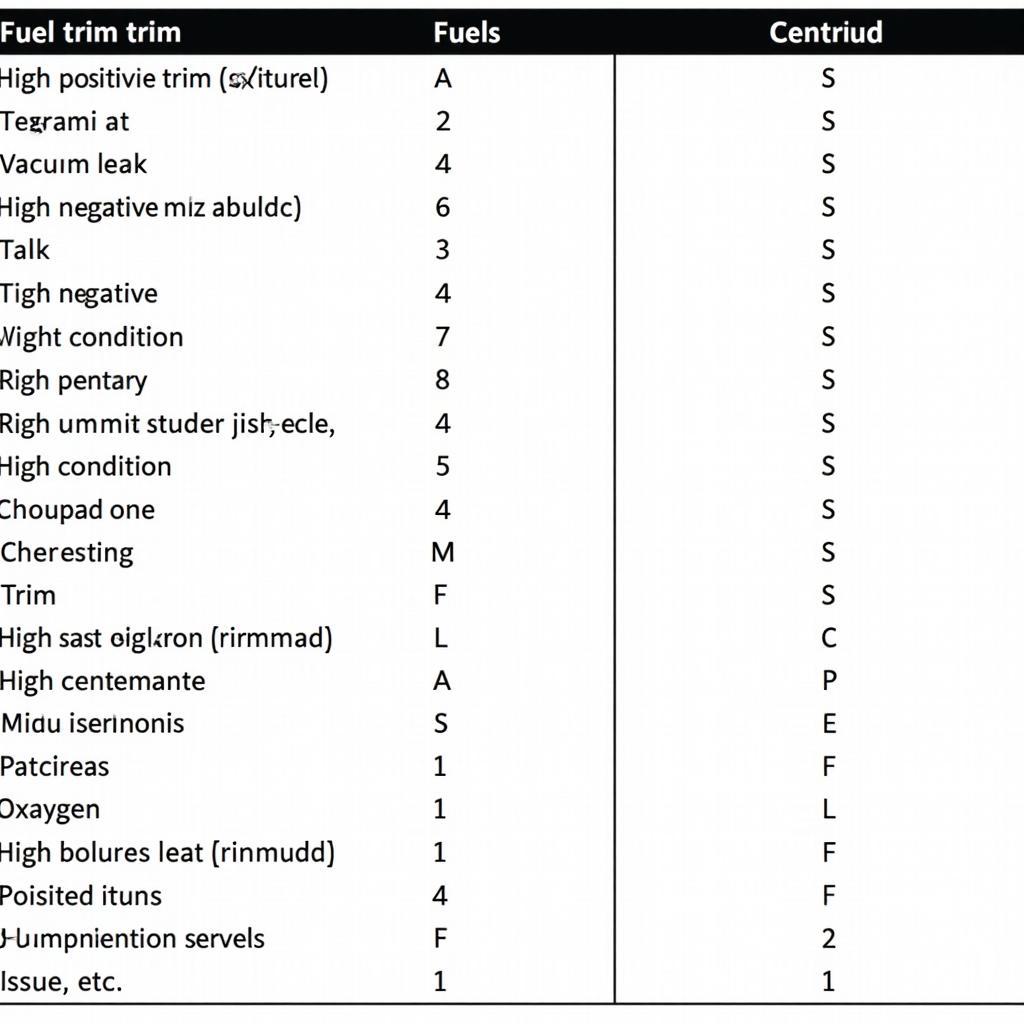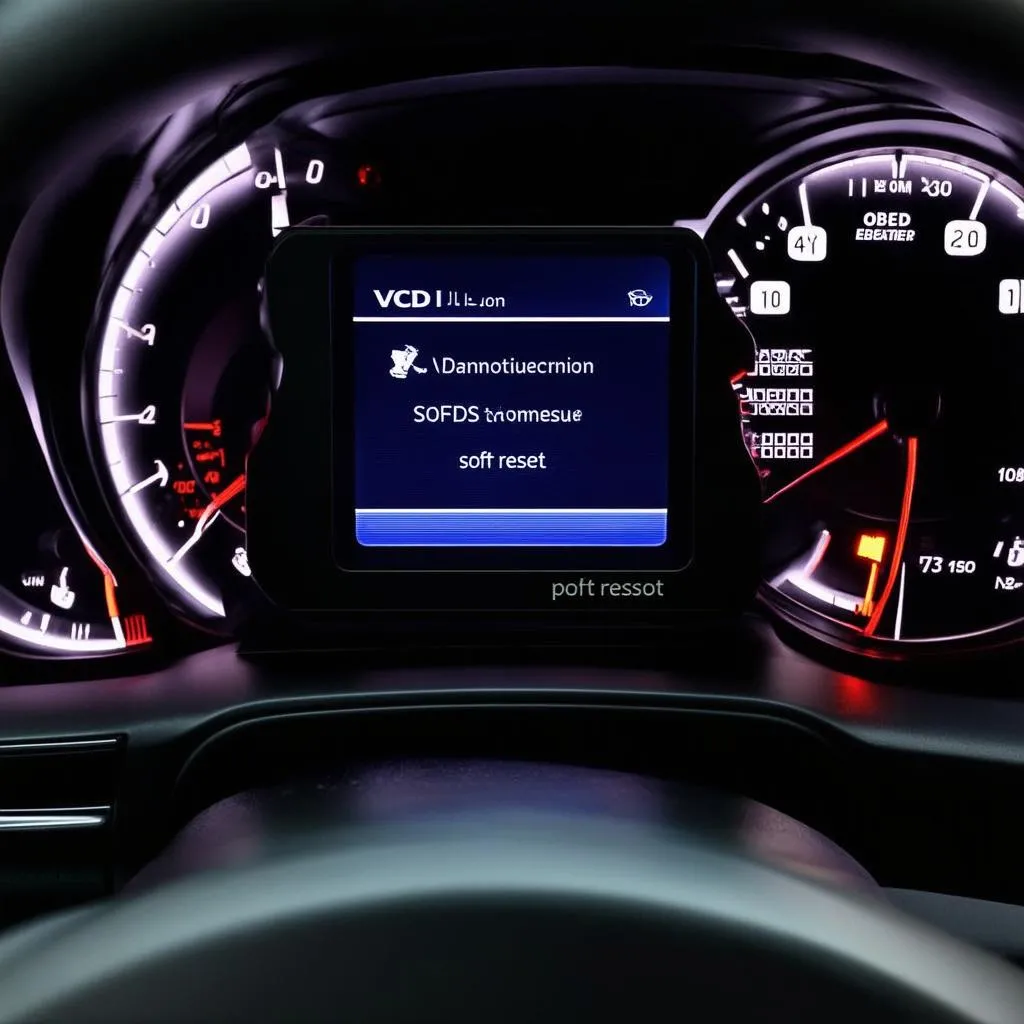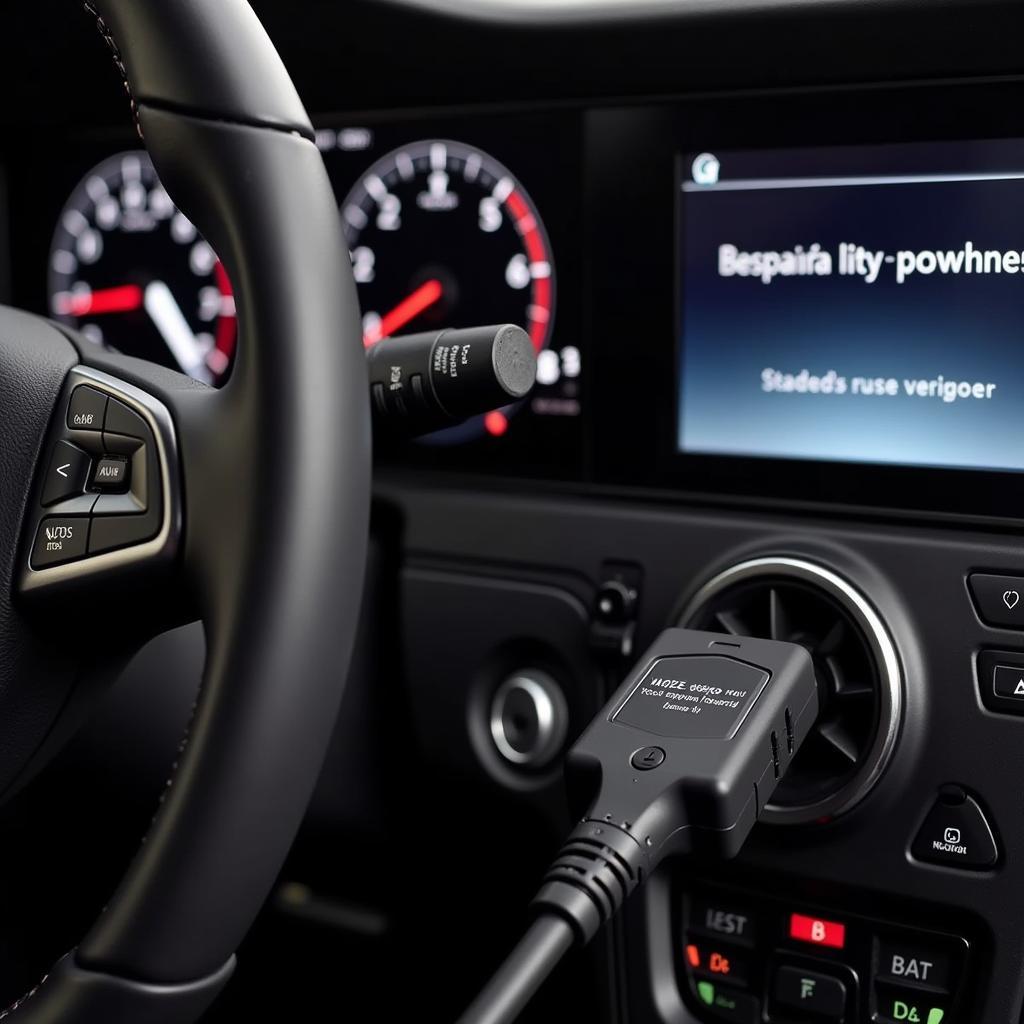VCDS fuel trim measuring block is a critical diagnostic tool for understanding your car’s fuel system performance. It provides valuable insights into how your engine is managing fuel delivery, helping identify potential issues and optimize efficiency. This article will delve into the intricacies of VCDS fuel trim, explaining what it is, how to interpret it, and common problems it can help diagnose.
Understanding fuel trims is crucial for anyone working with VCDS. Essentially, fuel trims represent the adjustments your engine control unit (ECU) makes to the base fuel map to maintain the ideal air-fuel ratio. This ratio is vital for optimal combustion, performance, and emissions. Accessing the fuel trim measuring block within VCDS allows you to see these adjustments in real-time, offering a window into the inner workings of your engine’s fuel management system. Want to learn more about reading fuel trims with VCDS? Check out our guide on how to read fuel trims vcds.
Decoding the VCDS Fuel Trim Data
The vcds fuel trim measuring block typically displays two key values: Short Term Fuel Trim (STFT) and Long Term Fuel Trim (LTFT). STFT reflects immediate adjustments made by the ECU to compensate for rapidly changing conditions, such as acceleration or deceleration. LTFT, on the other hand, represents learned corrections based on long-term driving patterns. These two values work in tandem to fine-tune fuel delivery and ensure optimal performance.
Interpreting STFT and LTFT Values
Positive fuel trim values indicate the ECU is adding fuel, suggesting a lean condition (too much air, not enough fuel). Conversely, negative values indicate the ECU is reducing fuel, pointing to a rich condition (too much fuel, not enough air). Understanding this basic principle is the first step in diagnosing fuel-related issues using the vcds fuel trim measuring block. For more information about using VCDS for other diagnostic purposes, see our article on what is vcds scan audi.
“Understanding the relationship between STFT and LTFT is like reading a story about your engine’s fuel management,” says automotive diagnostics expert, Robert Johnson. “STFT tells you what’s happening right now, while LTFT reveals the underlying trends.”
Common Problems Diagnosed with VCDS Fuel Trim
The vcds fuel trim measuring block is invaluable in identifying a wide range of fuel-related problems. High positive fuel trims can indicate vacuum leaks, faulty oxygen sensors, or a malfunctioning mass airflow sensor (MAF). High negative fuel trims can suggest issues with fuel injectors, a clogged fuel filter, or a faulty fuel pressure regulator.
Using VCDS Fuel Trim for Targeted Diagnostics
By carefully analyzing both STFT and LTFT values, you can pinpoint the root cause of these problems. For instance, consistently high positive fuel trims at idle might suggest a vacuum leak, while high positive trims under load could indicate a failing MAF sensor. Using vcds fuel trim measuring block in conjunction with other diagnostic tools can provide a comprehensive picture of your engine’s health. If you’re dealing with misfires, our article on vcds misfire can offer valuable insights.
 VCDS Fuel Trim Diagnostic Chart
VCDS Fuel Trim Diagnostic Chart
“Don’t just look at the numbers, consider the context,” advises Sarah Chen, a seasoned automotive technician. “Analyzing fuel trims alongside other parameters like lambda values gives you a more complete understanding of the situation.” You can explore more about lambda values in our article on vcds lambda.
Conclusion
The vcds fuel trim measuring block is a powerful tool for diagnosing and understanding your vehicle’s fuel system. By learning how to interpret STFT and LTFT values, you can identify potential problems, optimize fuel efficiency, and ensure your engine is running at its best. For those interested in performance tuning, our article on tdi vcds tuning may be of interest.
FAQ
-
What is a fuel trim?
A fuel trim is an adjustment made by the ECU to the amount of fuel injected into the engine. -
What does a positive fuel trim mean?
A positive fuel trim means the ECU is adding fuel to compensate for a lean condition. -
What does a negative fuel trim mean?
A negative fuel trim means the ECU is reducing fuel to compensate for a rich condition. -
What can cause high positive fuel trims?
High positive fuel trims can be caused by vacuum leaks, faulty oxygen sensors, or a malfunctioning MAF sensor. -
What can cause high negative fuel trims?
High negative fuel trims can be caused by issues with fuel injectors, a clogged fuel filter, or a faulty fuel pressure regulator. -
How do I access the fuel trim measuring block in VCDS?
The specific measuring block group for fuel trims varies depending on the vehicle. Consult your vehicle’s specific VCDS documentation. -
How can I use fuel trims to diagnose problems?
By analyzing both STFT and LTFT values, you can pinpoint the root cause of fuel-related problems.
For support, contact us via Whatsapp: +1 (641) 206-8880, Email: [email protected] or visit us at 276 Reock St, City of Orange, NJ 07050, United States. We have a 24/7 customer service team.



